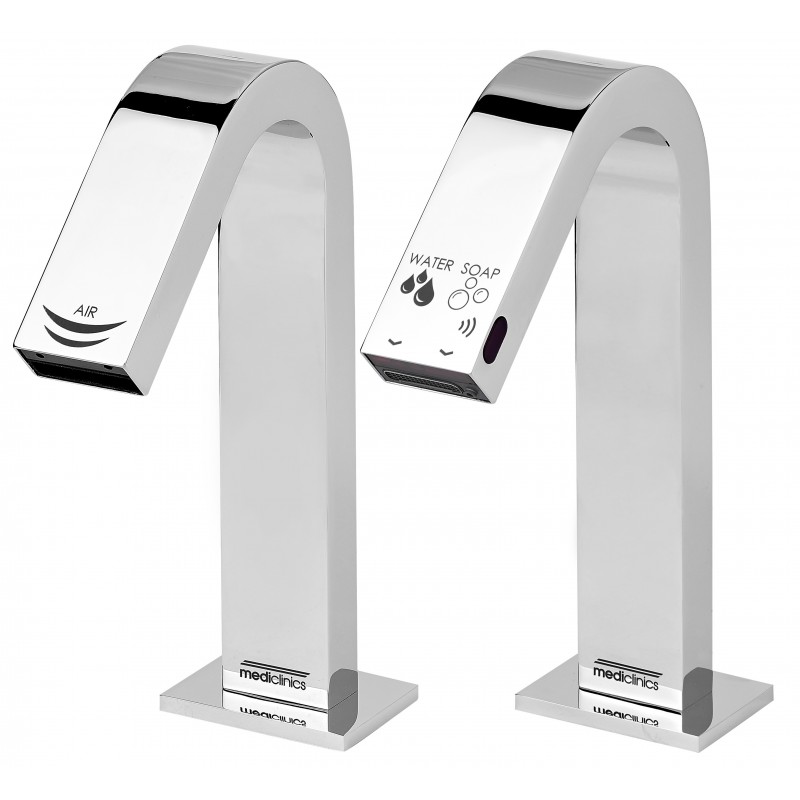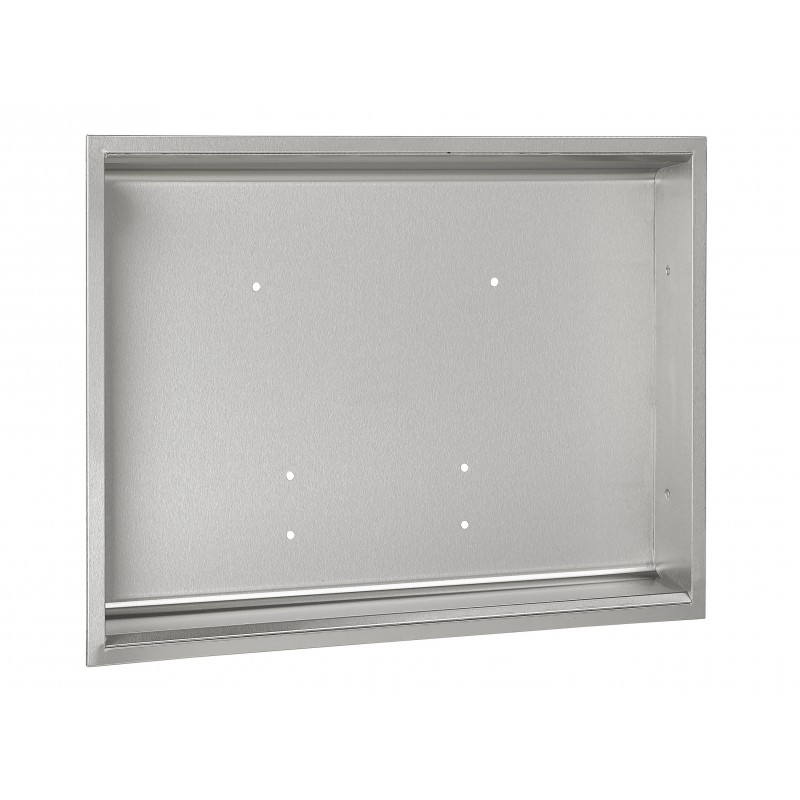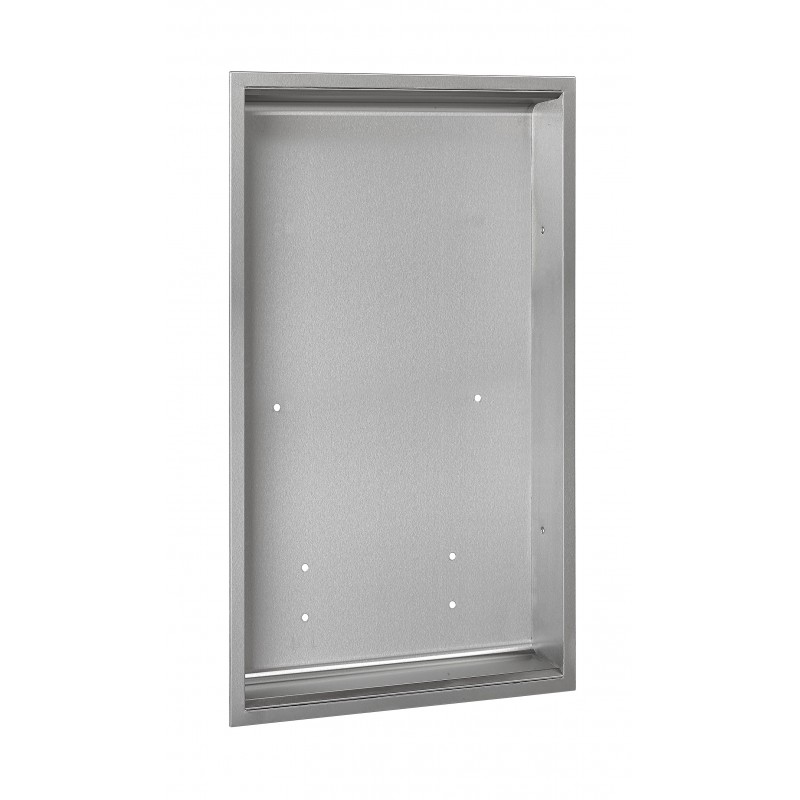ADA: The law that prohibits discrimination based on disability
The Americans with Disabilities Act of 1990, known as ADA (“Americans with Disabilities Act”) is a legislative regulation promoted by the United States government in 1990 that seeks to implement equal opportunities for people with reduced mobility, in the fields of employment, state and local government, in public places, commercial establishments, transportation, and telecommunications.
The ADA defines a disabled person as one who suffers from a physical, sensory or mental impairment that totally or partially disables them for work or other ordinary tasks of life.
On September 25, 2008, President George Bush signed the Americans with Disabilities Act, Amedment Acts (ADAAA), which came into effect on January 1, 2009. In the drafting of the ADAAA, a series of significant changes were included regarding the definition of "disability" in order to adapt it to the reality of that moment, which is still in force today.
"ADA not only grants equity to people with disabilities, but also significantly improves their quality of life."
It is very important to emphasize that this regulation not only grants equity to people with disabilities, but also significantly improves their quality of life since it allows the group of people with reduced mobility to expand their living space in closed areas, thus avoiding possible interference, blows or impediments derived from the natural need for space that they require.
“Access to collective toilets located in shopping centers, airports, public buildings, etc. it is one of the most important requirements within the ADAAA regulation."
One of the most important requirements within the ADAAA regulation is access to collective toilets located, for example, in shopping centers, airports, public buildings, etc. The law includes three fundamental points that must be taken into account when designing these spaces: the useful space, the installation heights and the projection of the objects.
Useful space according to ADA
Perhaps the biggest consideration when designing a public restroom to be ADA compliant is the accessibility of these spaces for people with wheelchairs. A sink is considered accessible if there is enough space for the wheelchair user to easily access the interior of the bathroom and, once inside, to maneuver easily. That is why the obstacle-free space established by this regulation is at least one meter. However, it must be borne in mind that not all people are physically the same. There are people with larger bodies than others and therefore this minimum distance of one meter, dictated by the norm, could generate an episode of discrimination since, as we have said before, not all people with mobility issues using bathrooms have the same physical complexion and, therefore, each individual may need a different space to move around the sink.
"Staying at or just above the minimum may be evidence that the option of cutting costs was chosen over the rights of people with disabilities and, by extension, means being negligent."
ADAAA sets these minimums to comply with the law, but also specifies and makes it very clear that when designing these spaces, we do not adhere to them to the letter. In other words, the standard expects these stipulated minimums, which are obviously legal, to be comfortably exceeded when designing a collective bathroom. Staying at or just above the minimum may be evidence that the option of cutting costs was chosen over the rights of people with disabilities and, by extension, means being negligent.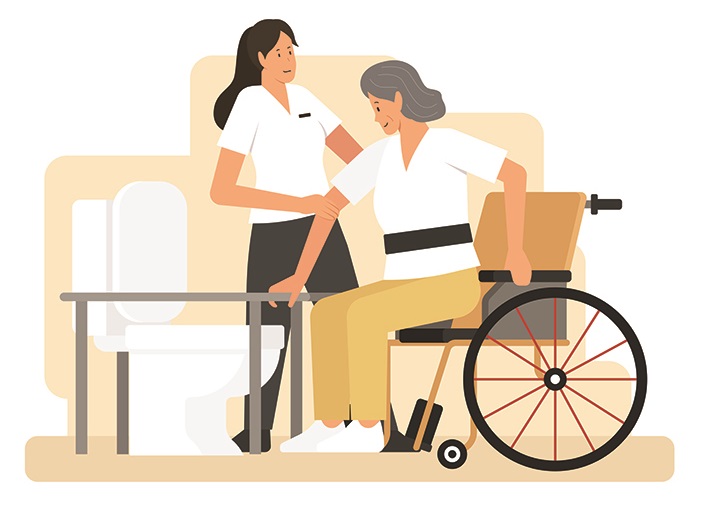
ADA and installation heights
Height is another key factor when it comes to the design of a bathroom framed within the ADAAA regulations. Sinks, soap dispensers, hand dryers, and all other bathroom fixtures should be installed low enough to the wall to be accessible to wheelchair users.
The upper limit on the installation height is set by the standard at 1.2 meters, but as in the previous section where we talked about free space, it would be prudent and/or advisable to put the bathroom accessories slightly below the established minimum limit in order to obtain universal accessibility, thus avoiding discriminating against a part of the group.
ADA sets the maximum projection of the objects installed on the wall
Any element installed on any of the walls of a collective bathroom can create risks for users with mobility problems and also for all those with vision problems if they are not installed correctly. It is for this reason that ADA dictates that any object installed on the wall cannot protrude more than 10 cm from it, much less obstruct the path of movement of people.
A very clear example of compliance with this point of the standard would be the Saniflow Speedflow Plus hot air hand dryer. This hand dryer, once installed on the wall, protrudes only 4 inches from the wall. This dimension is not the result of chance. In the product-design phase, Saniflow, a Mediclinics company, took into account the requirements of the ADA standard and decided to design a hand dryer with a metal casing that only protruded 4 inches from the wall.
“For Saniflow, it is very important that all people feel comfortable at all times, but also safe in the bathroom and it is for this reason that ergonomics within the collective wash-basin seems fundamental to us."
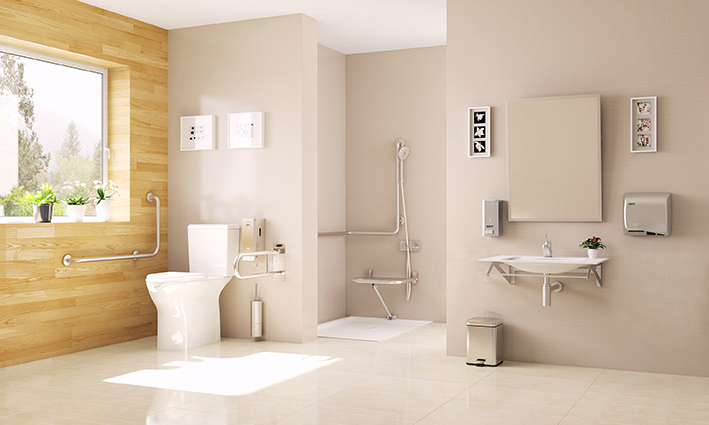
Mediclinics, our parent company in Spain, aware that accessibility and ergonomics in the collective bathroom must be a universal right, adopts ADA as a reference manual when designing products that provide equity to people with mobility problems and that help to significantly improve their quality of life. Our main objective is to conceive and design products that are adapted to the needs of this group, thus seeking their safety, comfort and well-being. For Mediclinics, it is very important that all people feel comfortable at all times, but also safe in the bathroom and it is for this reason that ergonomics within the collective wash-basin seems fundamental to us.
With reason it is imperative that our elders as well as people with special needs always be given the best possible care, and offer them the upmost comfortability in addition to having a safe and pleasant bathroom. All this can be achieved not only through distribution and decor, but also through small details such as bathroom accessories and technical aids. It is for this reason that, in addition to complying with the requirements of the ADA standard, if we want a collective bathroom to be safe, technical aids such as fixed or folding bars, handles/seats for the shower, and other essential elements that offer users with mobility problems that extra security and comfort should never be an oversight.
In this regard, Mediclinics offers a wide range of bars, handles and technical aids, designed and manufactured with ergonomics, safety and functionality as a reason for being. Mediclinics’ believes that all accessories and safety elements in a restroom should be like that faithful friend who always remains by your side when you need it most, serving you unconditional support… especially during personal hygiene routines.
Going back to the standard and acknowledging that ADAAA is a very good starting point, it is important to also note that each state, region, country, community, etc. each have their own universal accessibility regulations which must be thoroughly reviewed before beginning an architecture project in order to always meet all regulatory requirements.
Going back to the standard and acknowledging that ADAAA is a very good starting point, it is important to also note that each state, region, country, community, etc. each have their own universal accessibility regulations which must be thoroughly reviewed before beginning an architecture project in order to always meet all regulatory requirements. A study from Stanford Law School dated in 2011 states, “Many states have their own disability rights laws that compliment the Americans with Disabilities Act (ADA". Some states have different definitions of who is protected or what entities are required to comply, as well as different requirements or prohibitions. Some states provide an agency, either mandatory or voluntary, to assist with investigation and enforcement. States may provide different remedies, such as damages or criminal penalties for violations.”.
In conclusion, designing a restroom that complies with the ADAAA regulations will benefit the user who needs it; both from a safety point of view as well as comfort, and, in addition to avoiding possible incidences of discrimination that could incur economic damage to the company or person who’s restroom it belongs to.
Alfredo Bueno
Director of Quality and Regulatory Affairs
Mediclinics Group





